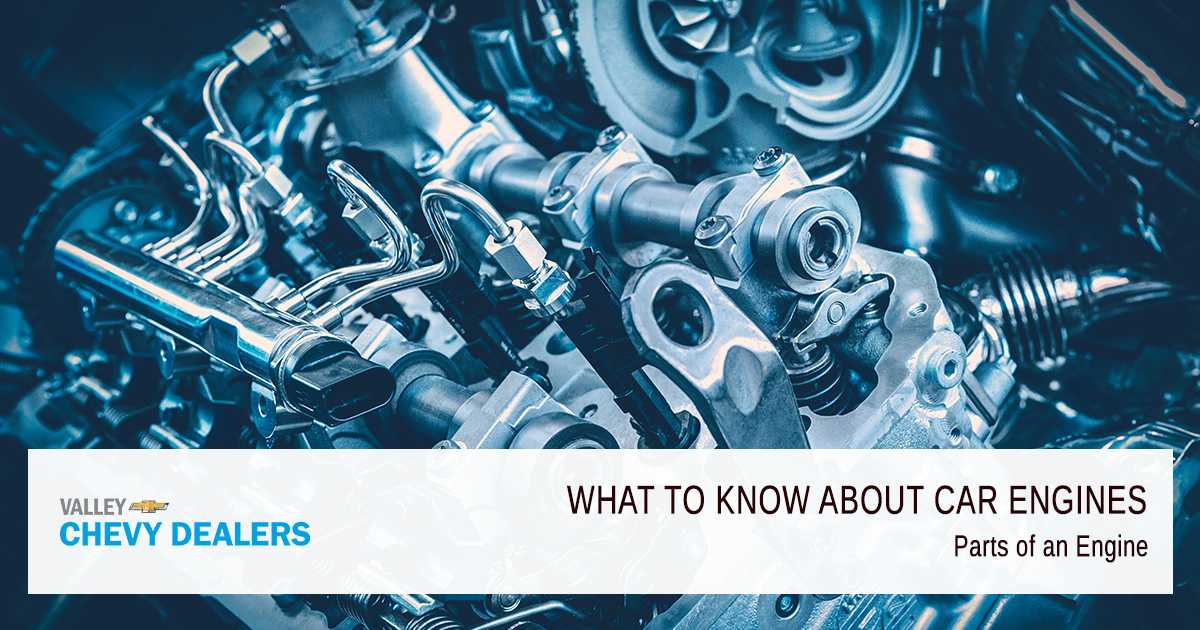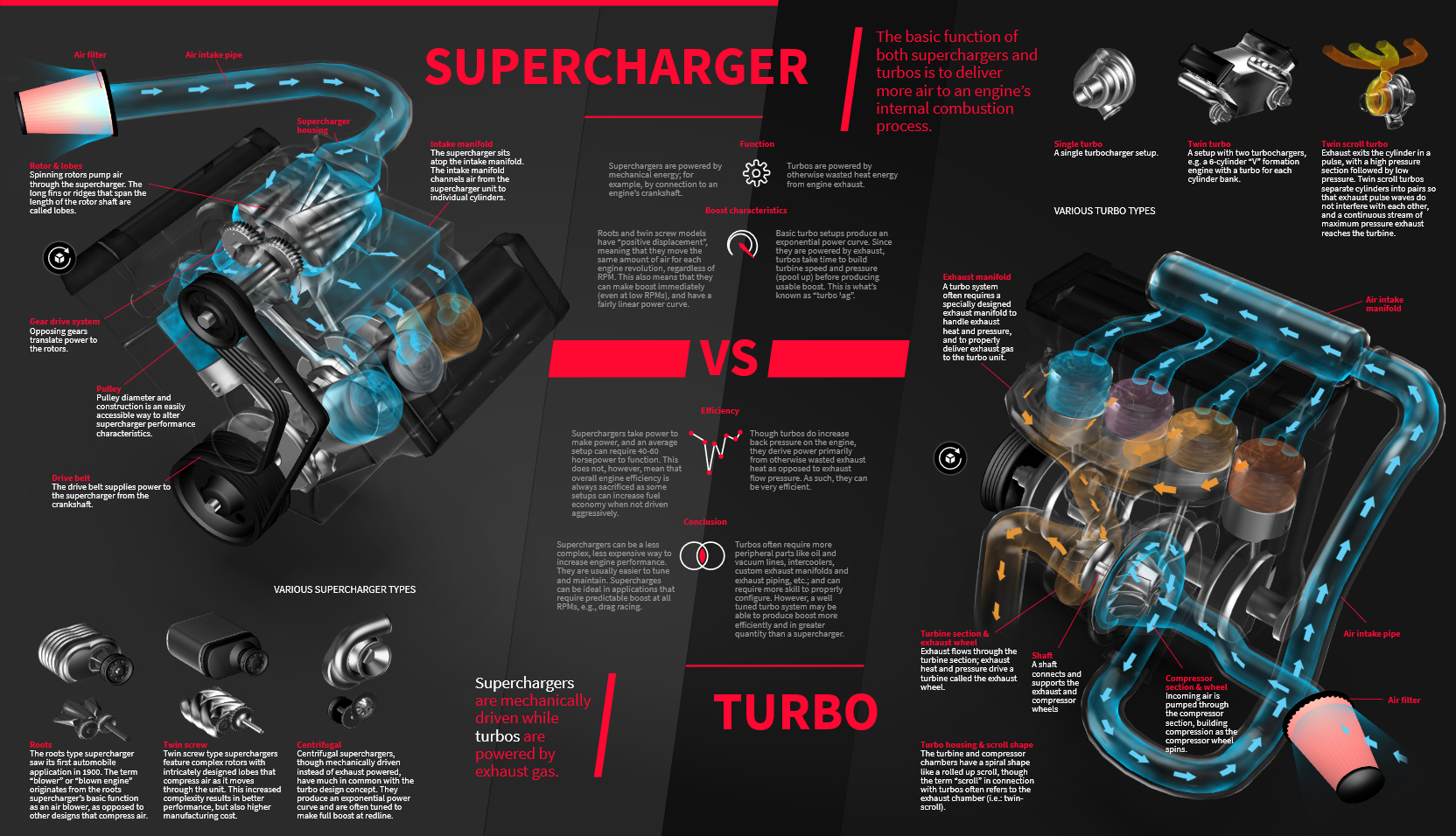What to Know About Car Engines When Buying a New Vehicle

These days there is so much more to picking the right car beyond what vehicle looks good and has the features you want. One important thing to think about is what type of engine it has. Automotive engines have evolved quite a bit from the Model A’s L-head, inline four-cylinder engine that first rolled off the assembly line last century. That evolution has continued as combustion engines have changed so much from the muscle cars we all know and love from the 1960s and ’70s to now.
Today, we get to choose not only between the four-cylinder, V6 and V8 engines common in vehicles throughout our lives, we have the added choice of hybrid, hybrid electric and full electric engines. If your head is swimming, and you’re not sure what these different types of engines are, don’t worry, we’re here to help. In the next few paragraphs we’ll walk you through what you need to know about car engines.
How an Engine Works
The most common type of engine on the market today is the internal combustion engine. An internal combustion engine is powered by of mixture of fuel and air that is pumped into the engine’s cylinders. This mixture is ignited, causing each cylinder’s piston to move with each small explosion in the cylinder, thereby transferring the power of thousands of explosions per minute into the vehicle’s gearbox and then to the wheels, propelling the vehicle forward or reverse, depending on which gear the vehicle is in.

An electric engine works without the fuel or explosions, using a rechargeable battery to power the engine instead of combustion, and a hybrid engine combines these two technologies, allowing for the combustion engine to automatically charge the battery for the electric engine.
Parts of an Engine
An internal combustion engine is made up of several parts. The cylinder block is the bulk of the engine. The cylinder block houses most of the other engine parts, such as the pistons, while other parts like the manifold are bolted on to the exterior. The cylinder block is where the combustion we discussed earlier takes place, forcing the pistons to move.

In each cylinder is a piston, when you see the terms four-cylinder, V6 and V8, the numeral refers to the number of cylinders in each engine type. The more cylinders an engine has the more power it can produce – however, the more fuel it takes to send power through the gearbox to the wheels.
The pressure created by the combustion pushes the cylinders down, through the connecting rod into the crank shaft, which converts the up and down movement of the piston into rotary motion that then rotates the gears, and then the wheels.
Bolted to the top of the cylinder block is the cylinder head, which seals the engine air-tight in order to keep internal gases from escaping and external gases, fluids and dust from getting in. Attached to the cylinder head are the spark plugs, one for each cylinder. The spark plugs create the spark that ignites the air and fuel mixture, timed to when each piston has returned to the upward position.
Bolted to the top of the cylinder head is the manifold that sucks the excess gases created by the combustion of the air and fuel mixture out of the engine, and through the exhaust, forcing it out through the exhaust pipe at the rear of the vehicle. This can either be done with a single exhaust or dual exhaust. A duel exhaust system improves the performance of the vehicle by getting the excess gases out of the engine quicker.
Types of Car Engines
There are naturally aspirated engines, turbo engines, and supercharger engines that all come in a variety of different amount of cylinders - sometimes even an odd number.

A 4-cylinder engine typically has four cylinders in one line, creating a compact engine that can fit in smaller engine compartments. Because they only use four cylinders, they use less fuel than larger engines. When combined with a well-designed vehicle like the Malibu, it can create a well-powered car with amazing fuel economy.
If you’re looking for something with more power, either for speed or hauling capabilities, then you’ll want to look into a V6 engine. The V indicates that the cylinders are separated into two rows of three, angled towards each other to create a V. This design allows for the power of a six- or eight-cylinder engine without a huge amount of space.
A V6 engine uses a slightly higher fuel and air mixture in order to provide pressure to all six cylinders – the extra two cylinders providing more power to the crankshaft, and on to the wheels, providing higher horsepower that translates into higher speeds, as seen in the Chevy Camaro, or power to pull more weight, as with the Chevy Silverado.
For the best power capabilities, a V8 provides the most power possible. Whether you want to fly down the highway in style in the Corvette, or you’re looking to haul your RV along with some off-road toys to Flagstaff for the weekend in your Silverado pickup truck, a V8 engine will provide you with the power you need.
If you’re looking to get the best fuel economy and produce lower emissions into the air, then a hybrid or full electric engine might be just the engine for you. A hybrid engine, like the one available in the Chevy Malibu, combines a four-cylinder engine with a battery-powered electric engine that is charged by excess energy produced by the four-cylinder combustion engine. The electric portion of the engine powers your vehicle in lower speeds, or helps power your vehicle in certain driving modes, allowing for lower fuel consumption without a sacrifice in power.
Hybrid electric cars, like the Chevrolet Volt, use similar technology. However, unlike the traditional hybrid that still requires gas in the tank to run, hybrid electric cars can be charged separately from the combustion engine, allowing for the vehicle to run on pure electric power. The Chevy Volt on a full charge can drive up to 53 miles on electricity alone. With a full tank and a full charge, the Volt can travel up to 420 miles before a refuel or recharge is required.
For the least environmental impact – doing away with the need for gasoline completely – full electric vehicles are becoming more popular. The Chevy Bolt, for example, uses a fully electric engine, which does away entirely with the combustion engine and the need for gasoline, creating zero harmful emissions into the air, with the capability to drive up to 238 miles on a full charge.
See also: Chevy Bolt Owner Does 300-Mile Round Trip on Single Charge
Full electric vehicles completely do away with stops at the pump. However, just like the powerful V6 and V8 engines consume more fuel, fully electric vehicles need a full charge to get the highest mileage. Don’t let that discourage you – the Chevy Bolt can be fully charged while you sleep, giving you all the miles you need to get around the valley and back.
Ready to Check Out a Chevrolet Engine?
Whether you’re looking for an eco-friendly full electric engine, economic hybrid or a powerful V8, Chevrolet has a vehicle to suit your desires. Stop by one of our conveniently located Chevy dealerships in Phoenix, and our dedicated team will help you test drive each of our engine types to help you find the car or truck that will help you find new roads.

